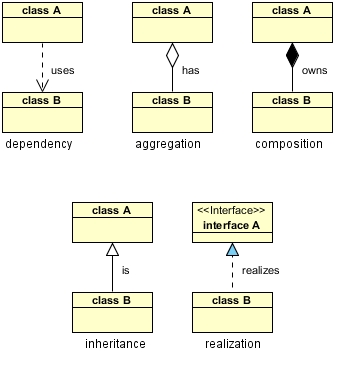1. Concept
Convolution is used in signal processing and analysis.
We can use convolution to construct the output of system for any arbitrary input signal, if we know the impulse response of system.
2. Definition
The mathematical form of convolution in discrete time domain;
$y[n]=x[n]*h[n]=\sum_{k=-\infty }^{+\infty }x[k].h[n-k]$
where:
$x[n]$ is input signal
$h[n]$ is impulse response, $h[n-k]$ time shifted
$y[n]$ is output
* denotes convolution
In order to understand the meaning of convolution, we have to take a look on impulse response and impulse decomposition.
3. Impulse decomposition.
The input signal is decomposed into simple additive components (in general, weighted sum of basis signals). And the system response of the input signal is the additive output of these components passed through the system.
We often use impulse (delta) functions for the basis signals.
Example how a signal is decomposed into a set of impulse (delta) functions:
1, & n=0\\
0, & n\neq 0
\end{matrix}\right.$
So
$x[0] = x[0].\delta [n] = 2\delta [n]$
$x[1] = x[1].\delta [n-1] = 3\delta [n-1]$
$x[2] = x[2].\delta [n-2] = 1\delta [n-2]$
because
$\delta [n-1]$ is 1 at n=1 and zeros at others.
Then
$x[n]$ can be represented by adding 3 shifted and scaled impulse functions.
$x[n] = x[0].\delta [n] +x[1].\delta [n-1]+x[2].\delta [n-2]=\sum_{k=-\infty }^{+\infty }x[k].h[n-k]$
4. Impulse Response
It is the output of a system resulting from an impulse input.
$x[n]=\sum x[k].\delta [n-k]\\
y[n]=\sum x[k].h [n-k]$
It means a signal is decomposed into a set of impulses and the output signal can be computed by adding the scaled and shifted impulse responses.
Convolution works on the linear and time invariant system.
5. Convolution in 1D
Consider example:
$x[n] = \{3, 4, 5\}$
$h[n] = \{2, 1\}$
$y[n]=x[n]*h[n]=\sum_{k=-\infty }^{+\infty }x[k].h[n-k]$
We have:
$y[0]=x[0].h[0-0]=3*2=6$
$y[1]=x[0].h[1-0]+x[1].h[1-1]=3*2+4*2=14$
$y[2]=x[0].h[2-0]+x[1].h[2-1]+x[2].h[2-2]=3*0+4*1+5*2=14$
$y[3]=x[0].h[3-0]+x[1].h[3-1]+x[2].h[3-2]+x[3].h[3-3]=4*0+5*1=5$
$y[4]=x[0].h[4-0]+x[1].h[4-1]+x[2].h[4-2]+x[3].h[4-3]+x[4].h[4-4]=0$
$y[i]=x[i]h[0]+x[i-1]h[1]+...+x[i-k]h[k]$
If you face the boundary such as x[-1],x[-2] you can skip the convolution at the boundary or pad 0 to them.
6. Convolution in 2D
2D convolution is extension of 1D convolution. It convolves both horizontal and vertical directions. It is used in image processing.
$\delta [m,n]=\left\{\begin{matrix}
1, & m,n=0\\
0, & m,n\neq 0
\end{matrix}\right.$
Here, the matrix uses [column, row] form.
A signal can be decomposed into a sum of scaled and shifted impulse functions.
$x[m,n]=\sum_{j=-\infty }^{+\infty}\sum_{i=-\infty }^{+\infty}x[i,j].\delta [m-i,n-j]$
and the output is:
$y[m,n]=x[m,n]*h[m,n]=\sum_{j=-\infty }^{+\infty}\sum_{i=-\infty }^{+\infty}x[i,j].h [m-i,n-j]$
The index of kernel matrix can be negative:
$
y[1,1]=\sum_{j=-\infty }^{+\infty}\sum_{i=-\infty }^{+\infty}x[i,j].h [1-i,1-j]=\\
x[0,0].h[1-0,1-0]+x[1,0].h[1-1,1-0]+x[2,0].h[1-2,1-0]\\
+ x[0,1].h[1-0,1-1]+x[1,1].h[1-1,1-1]+x[2,1].h[1-2,1-1]\\
+ x[0,2].h[1-0,1-2]+x[1,2].h[1-1,1-2]+x[2,2].h[1-2,1-2]
$
Convolution is used in signal processing and analysis.
We can use convolution to construct the output of system for any arbitrary input signal, if we know the impulse response of system.
2. Definition
The mathematical form of convolution in discrete time domain;
$y[n]=x[n]*h[n]=\sum_{k=-\infty }^{+\infty }x[k].h[n-k]$
where:
$x[n]$ is input signal
$h[n]$ is impulse response, $h[n-k]$ time shifted
$y[n]$ is output
* denotes convolution
In order to understand the meaning of convolution, we have to take a look on impulse response and impulse decomposition.
3. Impulse decomposition.
The input signal is decomposed into simple additive components (in general, weighted sum of basis signals). And the system response of the input signal is the additive output of these components passed through the system.
We often use impulse (delta) functions for the basis signals.
Example how a signal is decomposed into a set of impulse (delta) functions:
Figure: input signal decomposition
An impulse (delta) function : $\delta [n]=\left\{\begin{matrix}1, & n=0\\
0, & n\neq 0
\end{matrix}\right.$
So
$x[0] = x[0].\delta [n] = 2\delta [n]$
$x[1] = x[1].\delta [n-1] = 3\delta [n-1]$
$x[2] = x[2].\delta [n-2] = 1\delta [n-2]$
because
$\delta [n-1]$ is 1 at n=1 and zeros at others.
Then
$x[n]$ can be represented by adding 3 shifted and scaled impulse functions.
$x[n] = x[0].\delta [n] +x[1].\delta [n-1]+x[2].\delta [n-2]=\sum_{k=-\infty }^{+\infty }x[k].h[n-k]$
4. Impulse Response
It is the output of a system resulting from an impulse input.
Figure: h[n] is impulse response
Figure: the response of a time-shifted impulse function is also a time-shifted response, shifted by K
Figure: a scaled in input signal causes a scaled in the output (linear), c is constant
Figure: 3 additive components input, 3 additive components output
Figure: convolution equation
Finally, $x[n]=\sum x[k].\delta [n-k]\\
y[n]=\sum x[k].h [n-k]$
It means a signal is decomposed into a set of impulses and the output signal can be computed by adding the scaled and shifted impulse responses.
Convolution works on the linear and time invariant system.
5. Convolution in 1D
Consider example:
$x[n] = \{3, 4, 5\}$
$h[n] = \{2, 1\}$
Figure: x[n]
Figure: h[n]
From the equation of convolution:$y[n]=x[n]*h[n]=\sum_{k=-\infty }^{+\infty }x[k].h[n-k]$
We have:
$y[0]=x[0].h[0-0]=3*2=6$
$y[1]=x[0].h[1-0]+x[1].h[1-1]=3*2+4*2=14$
$y[2]=x[0].h[2-0]+x[1].h[2-1]+x[2].h[2-2]=3*0+4*1+5*2=14$
$y[3]=x[0].h[3-0]+x[1].h[3-1]+x[2].h[3-2]+x[3].h[3-3]=4*0+5*1=5$
$y[4]=x[0].h[4-0]+x[1].h[4-1]+x[2].h[4-2]+x[3].h[4-3]+x[4].h[4-4]=0$
Figure: y[n]
The pattern for programming:$y[i]=x[i]h[0]+x[i-1]h[1]+...+x[i-k]h[k]$
If you face the boundary such as x[-1],x[-2] you can skip the convolution at the boundary or pad 0 to them.
6. Convolution in 2D
2D convolution is extension of 1D convolution. It convolves both horizontal and vertical directions. It is used in image processing.
Figure: impulse function in 2D
The impulse (delta) function in 2D: $\delta [m,n]=\left\{\begin{matrix}
1, & m,n=0\\
0, & m,n\neq 0
\end{matrix}\right.$
Here, the matrix uses [column, row] form.
A signal can be decomposed into a sum of scaled and shifted impulse functions.
$x[m,n]=\sum_{j=-\infty }^{+\infty}\sum_{i=-\infty }^{+\infty}x[i,j].\delta [m-i,n-j]$
and the output is:
$y[m,n]=x[m,n]*h[m,n]=\sum_{j=-\infty }^{+\infty}\sum_{i=-\infty }^{+\infty}x[i,j].h [m-i,n-j]$
The index of kernel matrix can be negative:
Figure: a 3x3 matrix with indices -1,0,1, with origin is at middle of kernel.
Example:$
y[1,1]=\sum_{j=-\infty }^{+\infty}\sum_{i=-\infty }^{+\infty}x[i,j].h [1-i,1-j]=\\
x[0,0].h[1-0,1-0]+x[1,0].h[1-1,1-0]+x[2,0].h[1-2,1-0]\\
+ x[0,1].h[1-0,1-1]+x[1,1].h[1-1,1-1]+x[2,1].h[1-2,1-1]\\
+ x[0,2].h[1-0,1-2]+x[1,2].h[1-1,1-2]+x[2,2].h[1-2,1-2]
$



















0 Comments